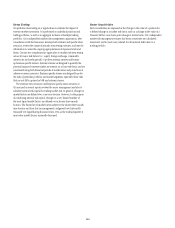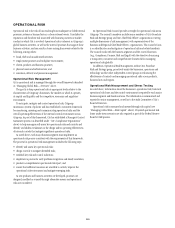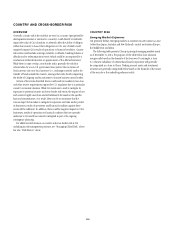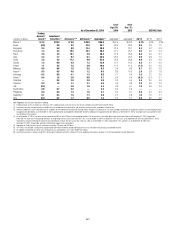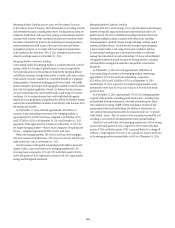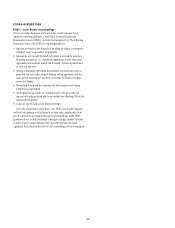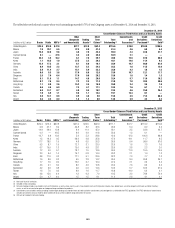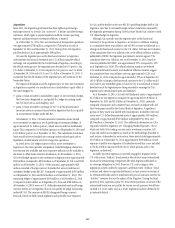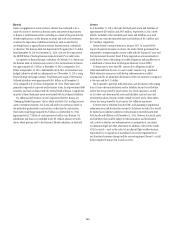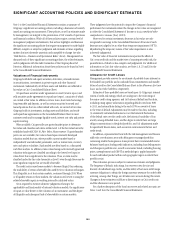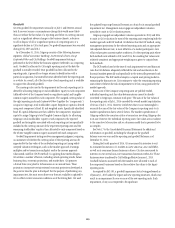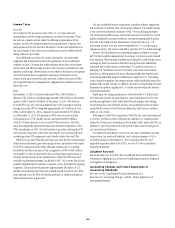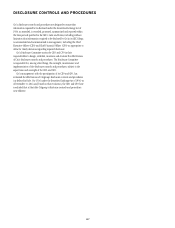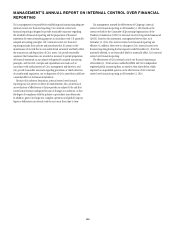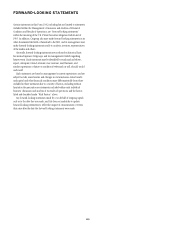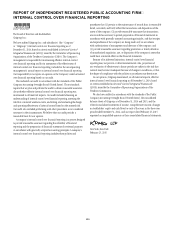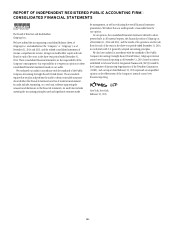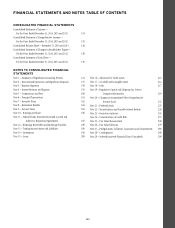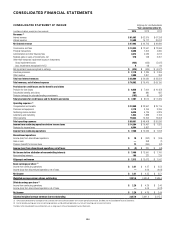Citibank 2014 Annual Report Download - page 141
Download and view the complete annual report
Please find page 141 of the 2014 Citibank annual report below. You can navigate through the pages in the report by either clicking on the pages listed below, or by using the keyword search tool below to find specific information within the annual report.124
SIGNIFICANT ACCOUNTING POLICIES AND SIGNIFICANT ESTIMATES
Note 1 to the Consolidated Financial Statements contains a summary of
Citigroup’s significant accounting policies, including a discussion of recently
issued accounting pronouncements. These policies, as well as estimates made
by management, are integral to the presentation of Citi’s results of operations
and financial condition. While all of these policies require a certain level of
management judgment and estimates, this section highlights and discusses
the significant accounting policies that require management to make highly
difficult, complex or subjective judgments and estimates at times regarding
matters that are inherently uncertain and susceptible to change (see also
“Risk Factors—Business and Operational Risks” above). Management has
discussed each of these significant accounting policies, the related estimates,
and its judgments with the Audit Committee of the Citigroup Board of
Directors. Additional information about these policies can be found in Note 1
to the Consolidated Financial Statements.
Valuations of Financial Instruments
Citigroup holds debt and equity securities, derivatives, retained interests
in securitizations, investments in private equity and other financial
instruments. Substantially all of these assets and liabilities are reflected at
fair value on Citi’s Consolidated Balance Sheet.
Citi purchases securities under agreements to resell (reverse repos) and
sells securities under agreements to repurchase (repos), a majority of which
are carried at fair value. In addition, certain loans, short-term borrowings,
long-term debt and deposits, as well as certain securities borrowed and
loaned positions that are collateralized with cash, are carried at fair value.
Citigroup holds its investments, trading assets and liabilities, and resale
and repurchase agreements on the Consolidated Balance Sheet to meet
customer needs and to manage liquidity needs, interest rate risks and private
equity investing.
When available, Citi generally uses quoted market prices to determine
fair value and classifies such items within Level 1 of the fair value hierarchy
established under ASC 820-10, Fair Value Measurement. If quoted market
prices are not available, fair value is based upon internally developed
valuation models that use, where possible, current market-based or
independently sourced market parameters, such as interest rates, currency
rates and option volatilities. Such models are often based on a discounted
cash flow analysis. In addition, items valued using such internally generated
valuation techniques are classified according to the lowest level input or
value driver that is significant to the valuation. Thus, an item may be
classified under the fair value hierarchy as Level 3 even though there may be
some significant inputs that are readily observable.
The credit crisis caused some markets to become illiquid, thus reducing
the availability of certain observable data used by Citi’s valuation techniques.
This illiquidity, in at least certain markets, continued through 2014. When
or if liquidity returns to these markets, the valuations will revert to using the
related observable inputs in verifying internally calculated values.
Citi is required to exercise subjective judgments relating to the
applicability and functionality of internal valuation models, the significance
of inputs or value drivers to the valuation of an instrument, and the degree
of illiquidity and subsequent lack of observability in certain markets.
These judgments have the potential to impact the Company’s financial
performance for instruments where the changes in fair value are recognized
in either the Consolidated Statement of Income or in Accumulated other
comprehensive income (loss) (AOCI).
Moreover, for certain investments, decreases in fair value are only
recognized in earnings in the Consolidated Statement of Income if such
decreases are judged to be an other-than-temporary impairment (OTTI).
Adjudicating the temporary nature of fair value impairments is also
inherently judgmental.
The fair value of financial instruments incorporates the effects of
Citi’s own credit risk and the market view of counterparty credit risk, the
quantification of which is also complex and judgmental. For additional
information on Citi’s fair value analysis, see Notes 1, 6, 25 and 26 to the
Consolidated Financial Statements.
Allowance for Credit Losses
Management provides reserves for an estimate of probable losses inherent in
the funded loan portfolio and in unfunded loan commitments and standby
letters of credit on the Consolidated Balance Sheet in the Allowance for loan
losses and in Other liabilities, respectively.
Estimates of these probable losses are based upon (i) Citigroup’s internal
system of credit-risk ratings, which are analogous to the risk ratings of
the major credit rating agencies; and (ii) historical default and loss data,
including rating agency information regarding default rates from 1983
to 2013, and internal data dating to the early 1970s on severity of losses
in the event of default. Adjustments may be made to this data, including
(i) statistically calculated estimates to cover the historical fluctuation
of the default rates over the credit cycle, the historical variability of loss
severity among defaulted loans, and the degree to which there are large
obligor concentrations in the global portfolio; and (ii) adjustments made
for specifically known items, such as current environmental factors and
credit trends.
In addition, representatives from both the risk management and finance
staffs who cover business areas with delinquency-managed portfolios
containing smaller homogeneous loans present their recommended reserve
balances based upon leading credit indicators, including loan delinquencies
and changes in portfolio size, as well as economic trends, including housing
prices, unemployment and GDP. This methodology is applied separately
for each individual product within each geographic region in which these
portfolios exist.
This evaluation process is subject to numerous estimates and judgments.
The frequency of default, risk ratings, loss recovery rates, the size and
diversity of individual large credits, and the ability of borrowers with foreign
currency obligations to obtain the foreign currency necessary for orderly debt
servicing, among other things, are all taken into account during this review.
Changes in these estimates could have a direct impact on Citi’s credit costs
and the allowance in any period.
For a further description of the loan loss reserve and related accounts, see
Notes 1 and 16 to the Consolidated Financial Statements.


